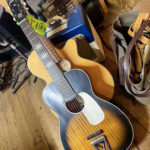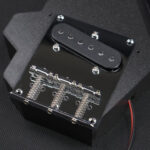The Am chord, or A minor, is a cornerstone for anyone starting their guitar journey. It’s often one of the first minor chords beginners learn because of its relatively simple finger positioning. Unlike some chords that can feel like finger gymnastics, the Am chord is quite accessible and paves the way for playing countless songs.
Let’s break down how to play the Am chord on your guitar, step by step, making it easy and enjoyable to learn.
Learn Guitar Chords Quickly
Discover the essential guitar chords in just one week with our daily lessons.
Let’s Learn the Am Guitar Chord
 Diagram showing the Am chord on a guitar.
Diagram showing the Am chord on a guitar.
Struggling with chord diagrams? Click here to learn how to read guitar chord diagrams.
Step 1: Position Your First Finger
Begin by placing your first finger on the first fret of the B string (that’s the second thinnest string). Remember, when we talk about frets, we mean the space just behind the metal fret, closer to the guitar’s headstock.
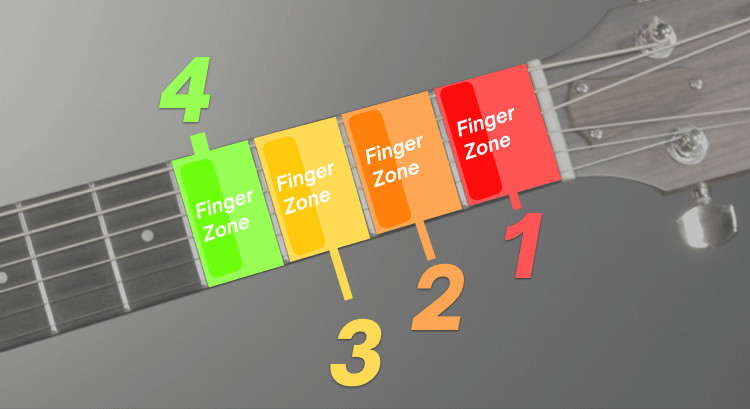 Diagram showing finger zones on a guitar neck.
Diagram showing finger zones on a guitar neck.
Looking at the diagrams above, your first finger should be on the ‘orange string’ within the ‘orange finger zone’. Here’s how it looks on your guitar:
Step 2: Add Your Second Finger
Next, position your second finger on the second fret of the D string (the fourth thinnest string).
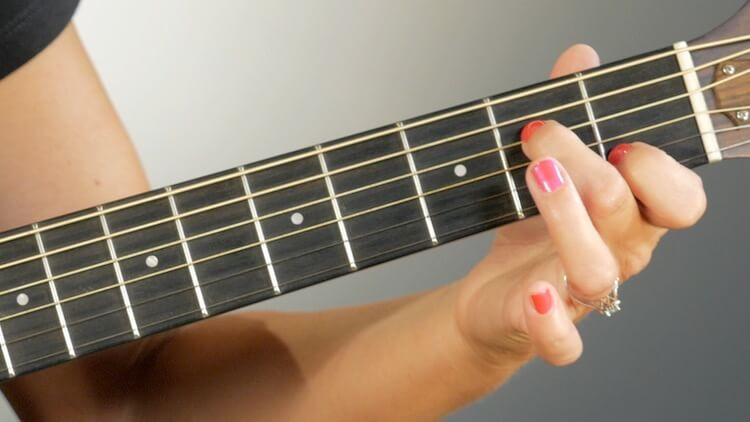 Image showing finger placement for the first two fingers of the Am chord.
Image showing finger placement for the first two fingers of the Am chord.
Take a moment to observe your second finger. Notice how it naturally curves over the top three strings? This curvature is important. You want to press down on the D string with just the tip of your finger. This technique helps ensure a clear and buzz-free sound when you strum the Am chord.
Unlock Essential Guitar Skills in 14 Days
Master key guitar techniques with our “One Chord a Day” course.
Step 3: Place Your Third Finger
Now, place your third finger on the second fret of the G string (the third thinnest string). You will need to position it right next to your second finger on the same fret. It might feel a little crowded at first, but with practice, it will become more natural.
Step 4: Strumming Your Am Chord
Not all guitar chords require you to strum every string. For the Am chord, you will only strum the thinnest five strings. Avoid strumming the thickest string (the low E string) for this chord.
Place your pick or thumb on the A string (the second thickest string) and strum downwards, ensuring you catch all the strings from the A string down to the thinnest E string. By excluding the low E string, you’ll achieve the correct sound for the Am chord.
Guitar Chord Coach for Am
Want real-time feedback as you learn? Use the ChordBank App’s Chord Coach to perfect your Am chord.
 Image of an iPhone displaying the ChordBank app.
Image of an iPhone displaying the ChordBank app.
The ChordBank app listens through your phone’s microphone as you play, guiding you string by string to ensure you’re playing correctly.
Start Practicing Am with Chord Coach »
Chord Coach: Step by Step Guitar Learning
Beginner Guitar Lessons
If you’re finding it challenging to get started with guitar chords, our “Chords For Beginners” lesson series is designed to make learning easy and accessible.
You’ll learn fundamental skills like tuning your guitar accurately, mastering essential chords, and playing in rhythm – all within a few days.
Start Your Beginner Guitar Journey Now »
Practice Am Chord Smarter
To help you master the Am chord efficiently, here are direct links to ChordBank’s practice drills and engaging games tailored for beginners.
These practice tools are available directly in the ChordBank app for iPhone and iPad.
Remember, consistent practice is key to making chords like Am stick in your muscle memory.
Make Practice Fun with Games
 Image of an iPhone displaying the ChordBank app.
Image of an iPhone displaying the ChordBank app.
 Image of an iPhone displaying the ChordBank app.
Image of an iPhone displaying the ChordBank app.
Try out Blast-o-chords or ChordPOP! in the ChordBank app while practicing transitioning to and from the Am chord. The app uses your iPhone’s microphone to listen to your playing and provides interactive feedback as you play correctly – fire darts or trigger explosions as you nail those chords!
Play Blast-o-chords: Am Now! »
Blast-o-chords: Am – Guitar Chord Game
Play ChordPOP! with Am, C, and D Chords »
ChordPOP!: Am, C, and D – Guitar Chord Game
Smart Flashcards for Chord Transitions
Learning to smoothly switch between chords is a crucial step in moving from simply holding a guitar to truly playing the guitar. Chord transitions are where musical fluency begins.
These smart flashcards are designed to specifically help you improve your chord changing speed and accuracy, starting with the Am chord.
Practice Chord Changes: Am to C
The transition from Am to C major is an excellent starting point for practicing chord changes. These two chords share finger positions, making the switch smoother.
Am
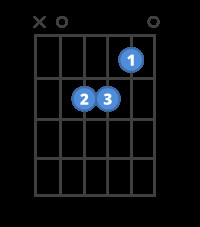 Chord diagram for Am.
Chord diagram for Am.
C
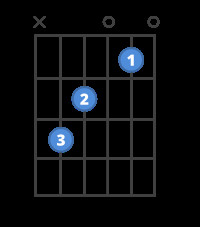 Chord diagram for C major.
Chord diagram for C major.
Both Am and C chords utilize similar fingers on adjacent strings. You can keep your first finger anchored while moving your second and third fingers, helping maintain your orientation on the fretboard.
Practice Am and C Chord Changes Now »
Smart Flashcards for Am and C Chords
Chord Combinations: Am, C, Em, G
Expanding your practice to include Em and G chords is another effective step. These four chords (Am, C, Em, G) are commonly used together in countless songs, making them a valuable combination to master early on.
Am
 Chord diagram for Am.
Chord diagram for Am.
C
 Chord diagram for C major.
Chord diagram for C major.
Em
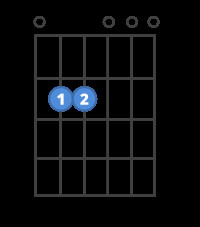 Chord diagram for Em chord.
Chord diagram for Em chord.
G
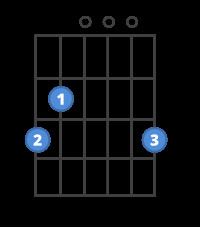 Chord diagram for G chord.
Chord diagram for G chord.
Practice Am, C, Em, and G Chord Changes »
Smart Flashcards for Am, C, Em, G Chords
By Anna Freitas, Guitar Instructor at guitarplayers.net and Berklee College of Music Alumna.

